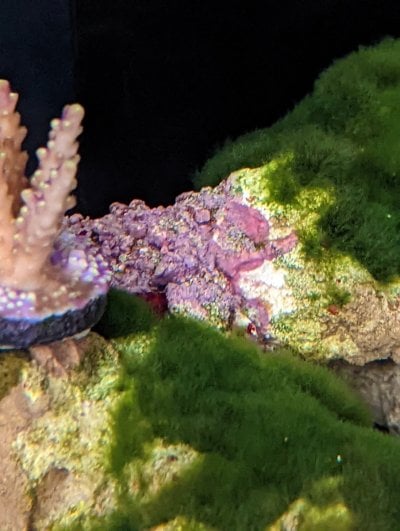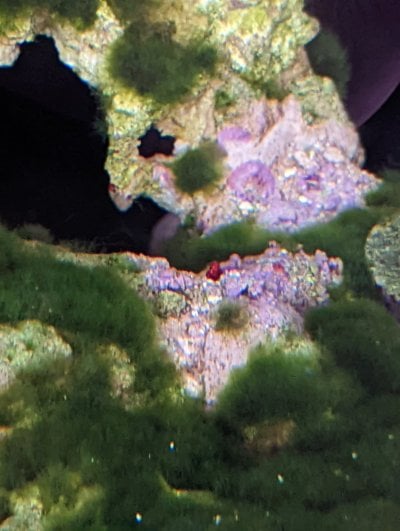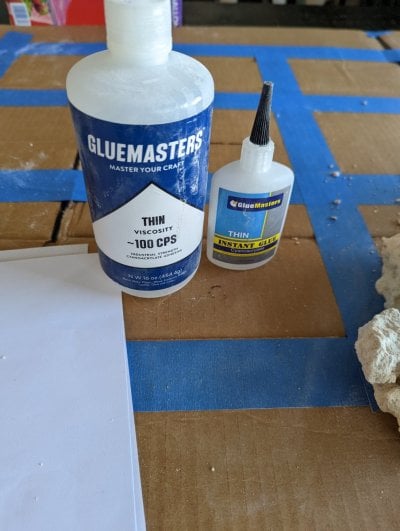I'm thinking about sealing the top halves of all the dry rock by soaking them with liquid super glue. I got the idea from another discussion on here and confirming similar observed results with another reefer.
In my 250 rebuild, the connections where I heavily glued together and are under high lighting had two drastic differences from all the rest of the rock.
#1, it appears to have inhibited algae growth. I'm guessing due to the glue sealing the rock from leaching nutrients locked in it.
#2, it grew coralline super fast. I don't have a guess for why this is happening. The glued sections are covered in coralline where as other rock surfaces are only beginning to grow specks.
I'm interested in experimenting with soaking the top halves of all rock structures with liquid glue. I hope that by doing this the top sections that are exposed to light will gain the two benefits. I'm leaving the bottom section unsealed so to allow the internal porosity of the rock to grow beneficial bacteria, and since there's no light there shouldn't be any algae growth.
Has anyone tried to do this, or have observed similar results? If I should not do this let me know as well.
These pics are of 3-4 months of growth from new dry rock.


In my 250 rebuild, the connections where I heavily glued together and are under high lighting had two drastic differences from all the rest of the rock.
#1, it appears to have inhibited algae growth. I'm guessing due to the glue sealing the rock from leaching nutrients locked in it.
#2, it grew coralline super fast. I don't have a guess for why this is happening. The glued sections are covered in coralline where as other rock surfaces are only beginning to grow specks.
I'm interested in experimenting with soaking the top halves of all rock structures with liquid glue. I hope that by doing this the top sections that are exposed to light will gain the two benefits. I'm leaving the bottom section unsealed so to allow the internal porosity of the rock to grow beneficial bacteria, and since there's no light there shouldn't be any algae growth.
Has anyone tried to do this, or have observed similar results? If I should not do this let me know as well.
These pics are of 3-4 months of growth from new dry rock.






















